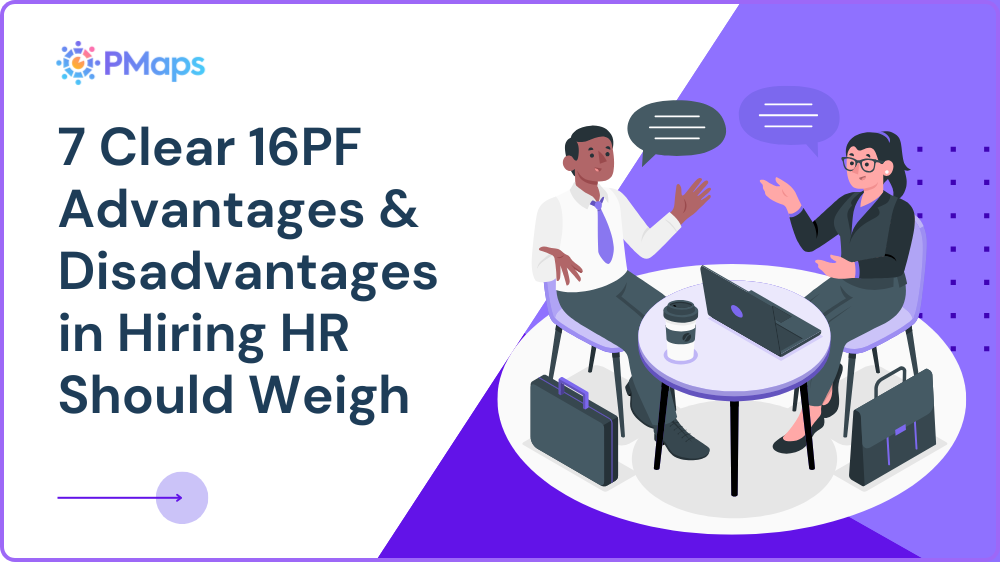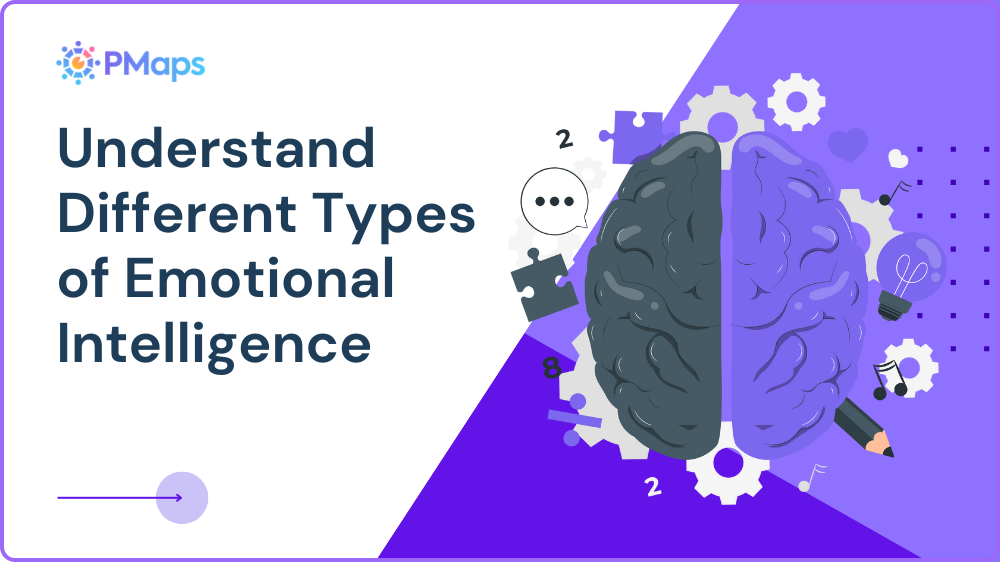
16PF advantages and disadvantages in hiring matter because personality data carries weight in high-stakes decisions. Leaders want predictable performance and cultural fit, yet they also want fairness. The 16PF questionnaire promises nuance. Used well, it informs choices. Used poorly, it risks bias, legal trouble, and unhappy teams.
The 16PF (Sixteen Personality Factor) Questionnaire measures sixteen primary traits through a standardized, research-driven inventory. Results sketch how people tend to think, relate, and respond under pressure. For hiring, that can guide interviews, onboarding plans, and manager expectations—when paired with structured skills evidence and job analysis.
If you already run skills tests with a talent assessment platform, personality data can add context, not verdicts. Treat it as a conversation starter, not a gate. For role-specific assessments and psychometrics under one roof, see PMaps’ options at pmapstest.com.
What is the 16PF in the Context of Hiring?
The 16PF questionnaire is a standardized personality assessment originally developed by Raymond Cattell through factor analysis. It uses a large item bank to estimate sixteen traits, such as warmth, dominance, rule-consciousness, and abstractedness. Scores roll up into global factors that describe broader behavioral patterns.
In hiring, the 16PF helps evaluators notice work-relevant tendencies: approach to stress, social comfort, openness to change, and preference for structure. It does not prove skill or intent. It does not replace reference checks or work samples. It shines when guiding structured interviews and coaching conversations after a skills screen.
Because it probes broad personality domains, the 16PF can support selection for leadership tracks, customer-facing roles, or team-heavy projects. The best results appear when a trained professional interprets scores and connects them to clear job demands, safeguards, and development plans.
Advantages of a 16PF in Hiring
Used with job analysis and skills evidence, the 16PF adds color to otherwise flat profiles. It highlights tendencies managers can plan around—how people handle stress, change, and structure. With trained interpretation and clear context, these signals sharpen interviews and shape onboarding without overruling demonstrated skill.
1) Comprehensive personality insight
Many tools compress people into types. The 16PF maps sixteen distinct traits, giving HR a nuanced profile. You see patterns across warmth, reasoning, self-discipline, and tension, rather than a single label. That detail supports richer interview probes and targeted onboarding conversations.
2) Useful signals for workplace behavior
Traits like emotional stability, openness to change, and rule-consciousness can flag likely strengths or friction points. Recruiters and managers can plan support: feedback cadence, autonomy levels, or change management coaching. The result is fewer surprises during the first ninety days.
3) Research-based development
The 16PF stands on decades of psychometric work and wide-scale validation. Its factor-analytic roots help keep constructs distinct. With professional administration, you get reliability strong enough for structured development and succession conversations, not just team-building workshops.
4) Versatility across HR use cases
Beyond selection, 16PF data supports leadership programs, coaching, team diagnostics, and internal mobility. One well-run assessment can inform multiple decisions across a talent cycle, improving continuity and reducing survey fatigue for candidates and employees.
5) Standardized process and reporting
The instrument follows clear administration rules and normed scoring. Reports present interpretable scales and narrative summaries. That consistency helps interview panels stay aligned, especially across locations, business units, and high-volume hiring cycles.
Disadvantages of the 16PF in Hiring
Personality data turns risky when rushed or isolated. Treating 16PF scores as a gate invites bias claims, shaky decisions, and unhappy candidates. Interpretation takes expertise, time, and money. Place it thoughtfully in the funnel, protect privacy, and use results to guide conversations—not to replace proof of ability.
1) Requires trained interpretation
Raw profiles can mislead when read without context. A licensed psychologist or trained practitioner should link scores to job demands. Small firms can find that expertise hard to access, which risks over-generalizing from numbers and missing the person.
2) Not a stand-alone hiring filter
A personality result should never serve as a yes/no gate. Overreliance invites bias claims and weak legal footing. Treat 16PF output as one input among many—alongside job analysis, structured interviews, work samples, and validated skills assessment results where relevant.
3) Time and cost pressures
Even streamlined versions take time to complete and score. Licensing, practitioner hours, and feedback sessions add cost. For high-volume frontline roles, that investment can exceed value unless the assessment clearly predicts outcomes you track.
4) Candidate experience concerns
Some candidates dislike personal questions in early stages. Without clear consent, privacy controls, and feedback options, trust drops. Anxiety rises, completion falls, and strong applicants may step away. Clear communication and timing within the funnel matter.
5) Complexity in translation to actions
Sixteen traits plus global factors can overwhelm busy hiring teams. Converting scores into job-relevant guidance requires discipline: a few target behaviors, matching interview questions, and a written plan. Without that, reports gather dust and decisions drift back to gut feel.
Best Practices for Using the 16PF in Hiring
Make personality data helpful, not heavy. Anchor 16PF to job analysis, pair with skills evidence, and time it well. Use trained interpretation, consent, and documented outcomes to support fair decisions:
- Pair with job analysis. Define success behaviors first. Map traits to role demands before testing.
- Combine with skills and evidence. Use work samples, structured interviews, and validated tests. Personality adds context, not verdicts.
- Use trained professionals. Require certified interpretation to prevent misuse and overreach.
- Place it thoughtfully in the funnel. Late stage for selection, or post-hire for development, minimizes candidate fatigue.
- Be transparent with candidates. Explain purpose, data privacy, and who sees results. Offer a brief feedback summary.
- Monitor fairness and outcomes. Review subgroup impact, success correlations, and complaint trends each quarter.
- Document decisions. Record behaviors and business needs, not just trait labels, in your ATS.
16PF vs Other Hiring Assessments
No tool stands alone. Compare scope, evidence, and effort across options. Contrast 16PF with Big Five, DISC, MBTI, and work samples, so teams choose right evidence for each decision wisely:
Big Five (OCEAN). Broadly accepted for workplace research, with strong evidence and simpler dimensions. Often easier for teams to interpret at speed. The 16PF offers finer granularity, which helps when you need targeted interview prompts and leadership coaching notes.
DISC. Quick, accessible, and focused on communication styles. Useful for team workshops and sales coaching. It is not designed as a deep selection tool. The 16PF provides a wider behavioral map that supports selection plus development with more precision.
MBTI. Popular and engaging, yet not built for hiring decisions. Type categories attract interest, but stability and predictive power lag for selection contexts. The 16PF and Big Five families fit evidence-led hiring and development more reliably.
Skills and work samples. For technical and operational roles, practical tests remain the clearest predictors. For instance in a coding assessment test, the task simulation reveals current capability of the candidate rather than a personality test. Add 16PF only to inform coaching, teaming, or leadership trajectory, not to replace proof of skill.
Legal and Ethical Guardrails
Next, move from intent to enforceable standards. Link 16PF uses job needs, secure permissions, and keeps audit-ready records. The following practices ensure protection, credibility, and organizational resilience under scrutiny:
- Job relevance. Assess only traits tied to essential functions. Keep a written map from job analysis to assessment use.
- Privacy and consent. Share what is collected, how it is stored, and retention timelines. Offer opt-out paths where allowed.
- Accessibility. Provide accommodations and accessible formats. Confirm language level matches the audience.
- Adverse impact review. Monitor subgroup outcomes. If gaps appear, reassess use, timing, and interpretation.
- Documentation. Keep notes on behaviors and business needs that informed the decision, not just test scores.
Practical Implementation Plan (Four Weeks)
Turn intent into action with a staged rollout. Map roles, set rules, pilot with a small cohort, and calibrate. This four-week plan reduces confusion, protects candidates, and builds manager confidence:
Week 1: Role mapping. Document success behaviors per role. Decide where personality data adds value. Align with leaders.
Week 2: Vendor and practitioner setup. Confirm licensing, data handling, and interpreter credentials. Draft candidate messaging.
Week 3: Pilot and calibration. Run with a small cohort. Compare findings with manager feedback and performance signals.
Week 4: Rollout rules. Lock placement in the funnel, who sees what, and a feedback template. Schedule quarterly outcome reviews.
Conclusion
Personality data can guide better hiring when used with skill evidence and clear guardrails. The 16PF adds context; your process delivers the decision. Keep it structured, kind, and job-relevant. Pair work samples with trained interpretation, and you’ll reduce surprises after day one.
Ready to put this into practice? PMaps blends work samples, role-mapped psychometrics, and clean reporting in one place. Get a live walkthrough tailored to your roles. Call 8591320212 or write to assessment@pmaps.in. Want to explore first?









